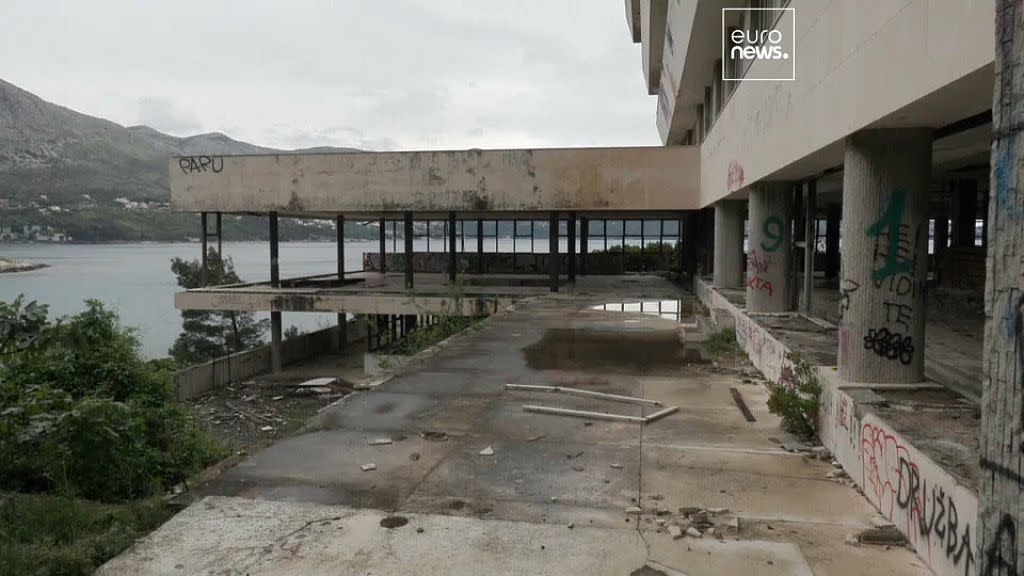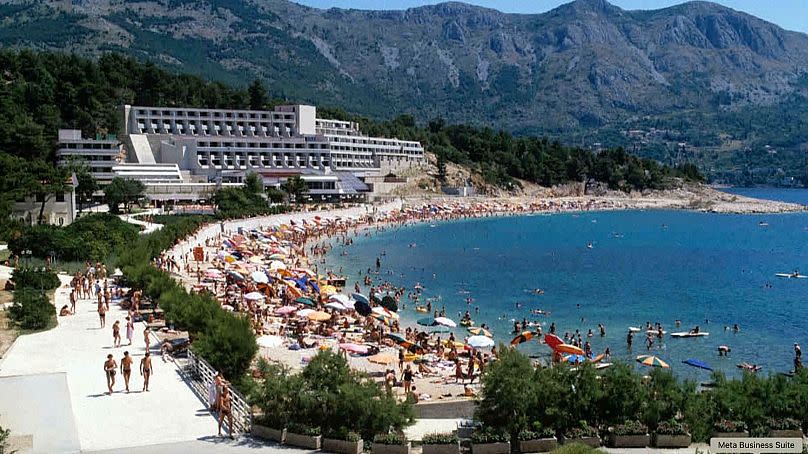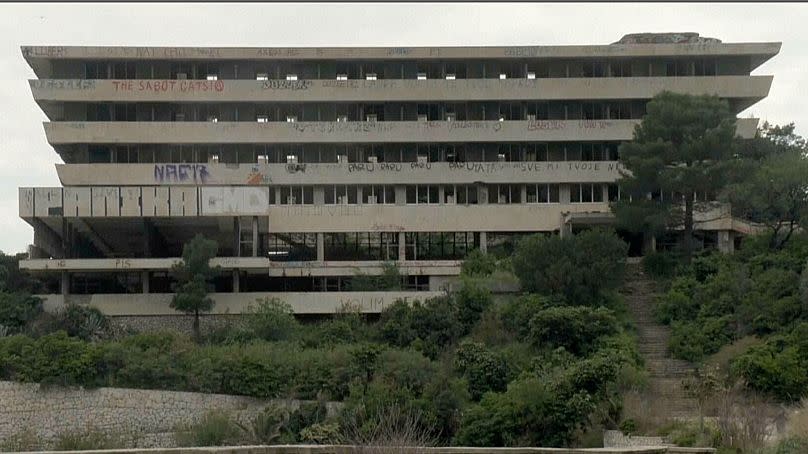Post-apocalyptic holiday resort overlooking the Adriatic Sea to be restored to its former glory

Once a must-visit holiday resort, now the leftovers of a warzone: in its 1960s heyday, Kupari in the former Yugoslavia was prized not just for the outstanding beauty of its beach, but its modernist architecture too.
The holiday complex is only a 15-minute drive south of the medieval town of Dubrovnik in Croatia.
It was built in an era when state-owned companies and the government in communist Yugoslavia built holiday resorts for their workers along the Adriatic coast.
Left for decades to rot following the Yugoslav Wars, the resort is soon to be restored to its former glory.
What's the history of the Kupari holiday resort?
Hailed at the time as one of the most important major construction projects, Kupari began after a small pre-war hotel there was nationalised.
The Yugoslav armed forces decided to continue expanding the resort to provide a holiday playground for members of the military.
The main jewel of the entire complex was the Hotel Pelegrin, a vast modernist building with more than 400 bedrooms, built in 1963.
It was based on the plans of a promising 32-year-old Bosnian architect, David Finci.
Almost immediately it was acclaimed as an iconic structure, admired for its futuristic facade and rows of concrete and stone-veneered balconies overlooking the Adriatic.
Could Croatia be the most sustainable travel destination in Europe? Its tourism minister hopes so
‘The perfect place to unwind’: Travellers recommend their favourite uncrowded destinations in Europe
Several more hotels and buildings were added over the years, with the exclusive resort eventually occupying a large area capable of accommodating 1,600 holidaymakers and another 4,000 guests at a nearby campsites.
Architectural historian Boris Vidakovic says it's hard to appreciate now how important the area had become.
"Hotel Pelegrin appeared on the covers of architecture magazines when it was built," he says. "At the time, it surprised both experts and the general public. The building is one of the pioneers that ushered a new generation, a new type of coastal projects.
"It was incredible, to see such a young architect, with so much confidence, succeed in creating such an original and iconic-looking hotel. It attracts attention to this day because of this - even in its present state of decay, it still looks monumental, it's still iconic and recognisable."

What caused the downfall of Kupari?
According to Vidakovic, it wasn't just the Balkan war that ended the resort's glory days - it had lost its previous lustre and appeal.
"Unfortunately, even though the hotel was damaged during the war [in the 1990s], its current condition is mainly the result of the decay over the last 20 years or so. After it lost its primary function, when it became disused, and when all maintenance stopped, the building was left to rot. There's nobody controlling it, there's no one checking or keeping tabs on what's going on with it, so year after year its dilapidated state just gets worse and worse," he says.
Although the hotels in Kupari were not open to the general public until the 1980s, the resort's facilities were open to locals in the wintertime, which meant that generations of children from nearby Dubrovnik spent much of their childhood doing sports in the resort's indoor arenas and pools, which included everything from basketball to water polo - a popular sport in southern Croatia.
It's an era Edin Brajovic remembers well as he spent his childhood at Kupari.
"It's hard for me to talk about it, because this is where I spent my youth. I was just talking to a friend about it, and reminisced about how my grandpa, who was an officer in the army reserves, was entitled to stay at the Hotel Kupari during the wintertime, every year.
"It had pools, a bowling alley, and table tennis. Indoor sports too, like basketball and soccer. I personally trained here as a kid, in many sports, like karate, ballet, table tennis, swimming. Even water polo - the GOSK Jug water polo club from Dubrovnik used to train here in the wintertime," says Brajovic.
In the early 1990s, during the violent breakup of Yugoslavia, the resort was looted, shelled and burned by the Yugoslav forces when they retreated from the area, ahead of the advancing Croatian army.

Kupari could soon be restored as a holiday resort
Although the resort was then inherited by the Croatian military, which still operates a small portion of it, most of it was taken back by the government in the 2000s.
It tried unsuccessfully to redevelop the area and potentially salvage the iconic Hotel Pelegrin.
In May 2022, a redevelopment project backed by a Russian billionaire which had been in the works since 2015 was taken over by a Singapore-based hotel company which operates dozens of luxury hotels around the world.
According to local officials, the new plan is to reconstruct and open a new resort by 2025.
Two decades after being largely abandoned, the buildings, and much of the 15-hectare resort, is just a shell of its former self - having been battered by weather, looted by souvenir hunters, and left to rot.
Today the site is often visited by locals who stroll around the concrete flotsam of history to ponder about happier times and what might have been.
Foreign visitors use Kupari as a unique backdrop.
It's a post-apocalyptic scene for a new generation, ideal for shooting viral videos of urban decay overlooking the clear blue waters of the Adriatic.

